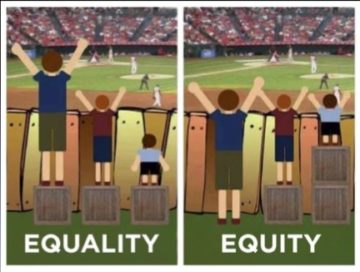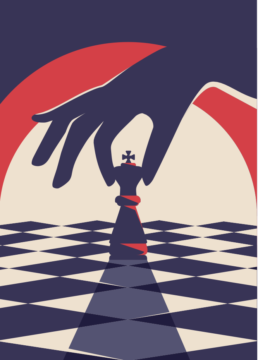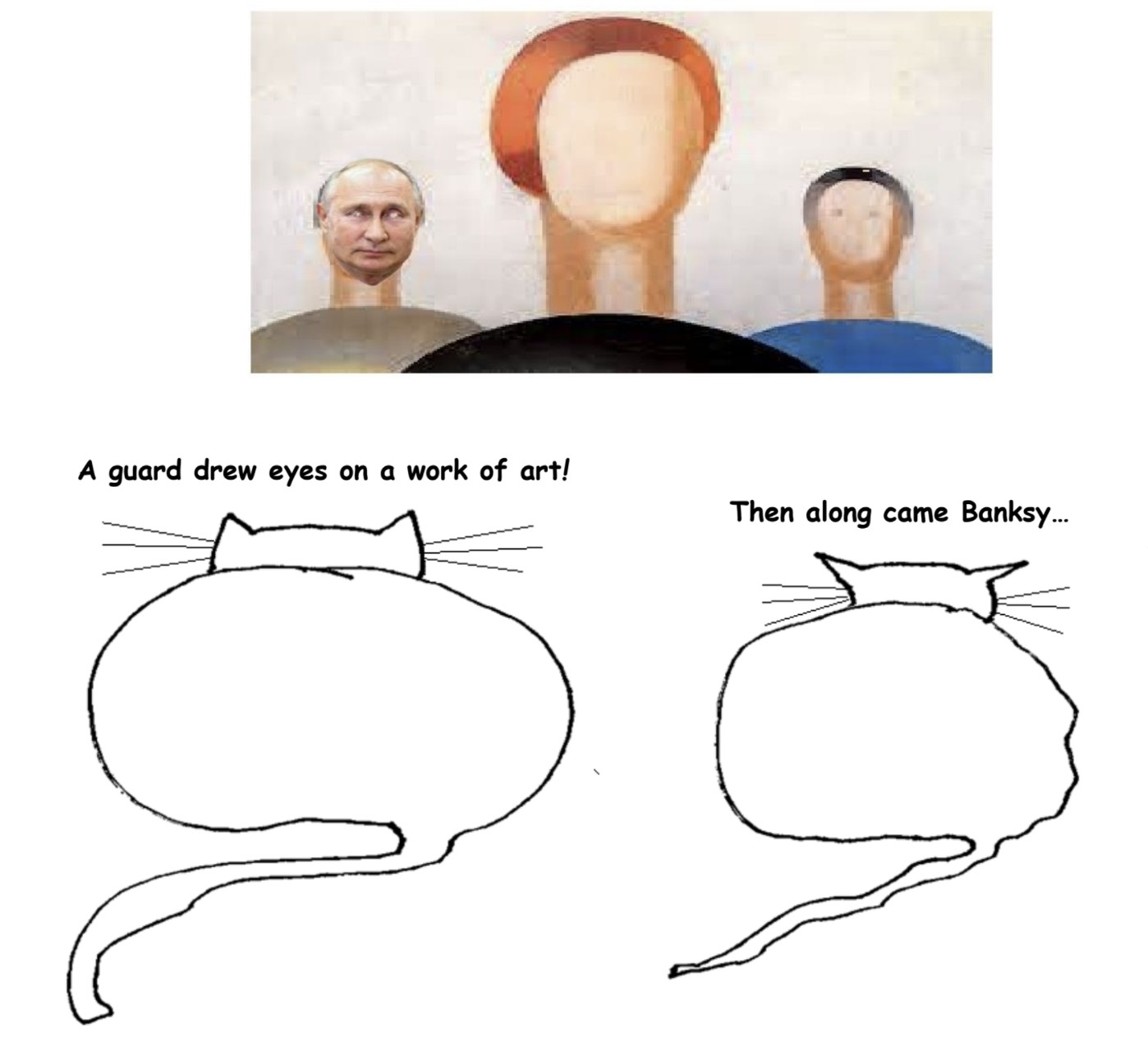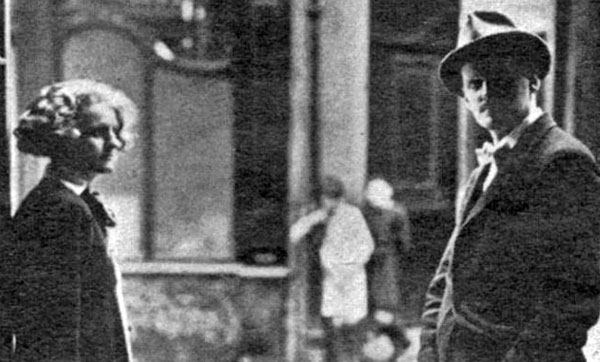 Sughra Raza. Bey Unvaan. February, 2022.
Sughra Raza. Bey Unvaan. February, 2022.
Digital photograph.
 Sughra Raza. Bey Unvaan. February, 2022.
Sughra Raza. Bey Unvaan. February, 2022.
Digital photograph.
by Chris Horner

Equality v Equity
How should society go about the business of redistributing resources? Many people will be acquainted with the image featured at the top of this article. It is supposed to show the superiority of the notion of ‘equity’ – that is, giving people what they need to succeed, thus satisfying the demand for fairness that the equality approach is depicted as failing. Since people don’t start in the same place, due to gender, race, disability and so on, so the argument goes, an equal distribution is unfair: everyone goes up a bit, as in the image on the left, but since the differences haven’t been addressed, the result is unfair. So we need equity rather than equality. This is an example of an argument that looks persuasive at first glance, but which is deeply problematic when we consider it further. To see why, we need to go beyond the thought experiment approach to this issue, to see the social and political context in which it has become popular.
A first point to make is that no thoughtful advocate of greater equality has been blind to the importance of considering the needs of recipients. If equality is about justice, then it can’t just be mathematical equality. Giving the same amount of food to a malnourished person and a replete one would obviously be unfair. So if the current equity over equality argument is just saying this we could just see it just a difference in the terms one uses. But there is more going on with it than that. Read more »
by David Oates

Looking at this photo brings a rush of feeling – complicated, lovely, heartbreaking: a simple still life captured from the churning reality of the sea and the shore, which of course means also the weather, the wind, the atmospheric chemistries and grinding tectonics and magmatic uplifts and erosions and all high things toppling and washing down to the sea, all far things brought to shore, all shores grinded and washed away – all accumulating here, in this moment of randomness.
And . . . that this is beautiful.
Why is this beautiful? What excess of indifferent cosmic love has so arranged our universe, that dead randomness be beautiful?
Can you stand on the shore and not feel it? Or under the starry night?
Our hearts are broken by beauty. And mended by it. And we are undone, truly, in feelings and cycles beyond resolution. All we can do is go mute. Wipe the tear away. Turn our faces to a loved one, to see if these runes might be written there too.
Sometimes they are.
But now, in 2022, how are we to think of natural beauty and solace? When the seas are acidifying, rising, heating up. The whole planetary heat-budget going haywire. Species dying, ecosystems crashing. And worse to come.
This is an essay about lost refuges. Can I still stand on the shore and be restored, spiritually renewed? Yes. But, Reader, it is very hard work. Hard, heavy work. Read more »
by Brooks Riley

by Ethan Seavey
 Why do I have to help?
Why do I have to help?Because I can’t just watch from inside the house any longer. Because the sun is setting behind grey clouds during a Chicago winter. Because you can’t recognize how dark it is getting until the streetlights switch on all at once. Because you don’t realize how cold your hands get while shoveling snow away from your tires until you try to fail to wrap them around the steering wheel. Because you’ve been working all day or because you’re late to work all night, and this snowstorm was the worst thing that could have happened.
Because it’s been fifteen, thirty minutes now and your terrifically impractical silver sedan hasn’t moved, and because I can see even through the window, even through the dim winterlight, that your tires needed to be changed years ago, because they are smooth as rubber bands and the two rear wheels spin wildly, freely, disobeying God or Newton or the settings of the universe.
Because two pedestrians, a greying white man and a woman out on a walk, they have already come to the rescue and because I am just sitting inside and watching. Because they shiver in the cold and I am warm. Because they have scavenged cardboard from the alley to put under the tires for traction and because this cardboard is already shredded and dampened and useless. Because I have dry cardboard and car mats stashed away. Read more »
by Dwight Furrow
 Among the ideas in the history of philosophy most worthy of an eye-roll is Aristotle’s claim that the study of metaphysics is the highest form of eudaimonia (variously translated as “happiness” or “flourishing”) of which human beings are capable. The metaphysician is allegedly happier than even the philosopher who makes a well-lived life the sole focus of inquiry. “Arrogant,” self-serving,” and “implausible” come immediately to mind as a first response to the argument. It’s not at all obvious that philosophers, let alone metaphysicians, are happier than anyone else nor is it obvious why the investigation of metaphysical matters is more joyful or conducive to flourishing than the investigation of other subjects.
Among the ideas in the history of philosophy most worthy of an eye-roll is Aristotle’s claim that the study of metaphysics is the highest form of eudaimonia (variously translated as “happiness” or “flourishing”) of which human beings are capable. The metaphysician is allegedly happier than even the philosopher who makes a well-lived life the sole focus of inquiry. “Arrogant,” self-serving,” and “implausible” come immediately to mind as a first response to the argument. It’s not at all obvious that philosophers, let alone metaphysicians, are happier than anyone else nor is it obvious why the investigation of metaphysical matters is more joyful or conducive to flourishing than the investigation of other subjects.
Is there an insight here to be salvaged? Can this implausible argument about the glorious lives of metaphysicians be separated from the rest of Aristotle’s argument that philosophy is not only a way of life but the quintessentially superior way of life?
Aristotle argued that the activity of all beings is governed by their characteristic function which drives developmental processes. Reason is the characteristic function of human beings, and it’s the perfection of our capacity to reason so that we come to know the truth about a subject matter that constitutes flourishing. All human activity is directed toward this goal of flourishing although most human beings haven’t grasped its true nature or lack the necessary habits and self-control to achieve it. Thus, our pursuit of it is confused. Read more »
by David M. Introcaso
 In late January the United States Senate Health, Education, Labor and Pensions (HELP) Committee released a draft discussion of its COVID-prompted public health bill titled, “Prepare for and Respond to Existing Viruses, Emerging New Threats, and Pandemics Act” (PREVENT Pandemics Act). Patty Murray, HELP Committee Chairwoman and Washington State senator, defined the bill as one that would “improve the nation’s preparedness for future public health emergencies.” We need to, Senator Murray stated further, “take every step we can to make sure we are never in this situation again.” The draft is fatally flawed because inexplicably the HELP Committee, the Senate “public health” committee, does not address much less recognize ever-increasing health harms caused by the climate crisis. As a result, the committee’s bill is what Orwell would term a “flagrant violation of reality.”
In late January the United States Senate Health, Education, Labor and Pensions (HELP) Committee released a draft discussion of its COVID-prompted public health bill titled, “Prepare for and Respond to Existing Viruses, Emerging New Threats, and Pandemics Act” (PREVENT Pandemics Act). Patty Murray, HELP Committee Chairwoman and Washington State senator, defined the bill as one that would “improve the nation’s preparedness for future public health emergencies.” We need to, Senator Murray stated further, “take every step we can to make sure we are never in this situation again.” The draft is fatally flawed because inexplicably the HELP Committee, the Senate “public health” committee, does not address much less recognize ever-increasing health harms caused by the climate crisis. As a result, the committee’s bill is what Orwell would term a “flagrant violation of reality.”
Preparing for “emerging new threats” appears unrelated to the Pacific Northwest’s recent 1,000-year heat wave, made 150 times more likely by Anthropocene warming, that killed 1,400 including Chairwoman Murray constituents, moreover seniors. In sum, last year produced 20, $1 billion climate-related disasters. Over the past five years these have cost Americans $750 billion. Last summer’s heat dome also killed Senate Finance Committee Chairman constituents. Unlike the HELP Committee, Senate Finance did hold, for the first time in nine years, a climate-crisis related hearing this session. However, Senator Wyden defined the climate crisis exclusively as a tax policy problem. In his opening statement, he argued, “Getting the policy right . . . is the whole ballgame.” If only. How does tax reform remedy the 58% of excess annual US deaths caused by fossil fuel emissions particularly when greenhouse gas emissions, moreover CO2, remain in the atmosphere for upwards of a thousand years. Read more »
by Pranab Bardhan
All of the articles in this series can be found here.
 Soon K.N.Raj gave up his Vice-Chancellorship and moved to his home state, Kerala, and started a new institution, Center for Development Studies (CDS). He tried to lure me (and Kalpana) to join the faculty there, and even offered to get us land on which he’d persuade his friend Laurie Baker (a resident British-Quaker architect) to build us a low-cost, energy-efficient beautiful house (like his own). At CDS, he not merely provided intellectual leadership, he was the pater-familias for the group. After a whole day of teaching and seminars, in the evening he’d visit his colleagues’ homes, try to solve their multifarious domestic problems, while his wife, Sarsamma, will minister to their sundry medical needs. Once driving me to the airport, when I was all praise for the young institution and the community he was in the process of building, he asked me if I had any word of criticism. I told him it was too much of a “Hindu undivided family” for my taste. Raj corrected me and said it was not “Hindu” — he did not seem to mind the “undivided family” part.
Soon K.N.Raj gave up his Vice-Chancellorship and moved to his home state, Kerala, and started a new institution, Center for Development Studies (CDS). He tried to lure me (and Kalpana) to join the faculty there, and even offered to get us land on which he’d persuade his friend Laurie Baker (a resident British-Quaker architect) to build us a low-cost, energy-efficient beautiful house (like his own). At CDS, he not merely provided intellectual leadership, he was the pater-familias for the group. After a whole day of teaching and seminars, in the evening he’d visit his colleagues’ homes, try to solve their multifarious domestic problems, while his wife, Sarsamma, will minister to their sundry medical needs. Once driving me to the airport, when I was all praise for the young institution and the community he was in the process of building, he asked me if I had any word of criticism. I told him it was too much of a “Hindu undivided family” for my taste. Raj corrected me and said it was not “Hindu” — he did not seem to mind the “undivided family” part.
While I did not join CDS, though visited it a few times, Raj did twist my arm to take up the only work I ever did in my life for any government anywhere — he got me to chair a commission of enquiry into Kerala’s plantations, appointed by the CPI government of Achutha Menon, a friend of Raj. Suresh Tendulkar, whom I brought as a co-member, and I worked hard to write a detailed official report, which by now insects must have chewed up in some ministry dungeon in Thiruvananthapuram, but this gave me an opportunity to travel up and down the countryside, have a closer look at Kerala’s remarkable society and economy, and the beautiful lush green landscape. Read more »
by Charlie Huenemann

SOCRATES: Dear sir! You seem to be an happy fellow, able to enjoy the mixed bitter and sweet fortunes of life!
DUDE: Oh, hey, man! Nice toga thing you got going on there. Let it hang, right?
SOCRATES: You are kind! And, indeed, perhaps too kind; for should one man compliment another on what is mere appearance, on the mere vestiges of one’s life?
DUDE: Oh, vestiges, right … What are you having there, old timer? Sangria? White Russian for me, Gary.
GARY: Sure thing, Dude.
SOCRATES: Can you tell me, dear Dude, whether the unexamined life is worth living?
DUDE: Right, the … uh, how’s that again?
SOCRATES: The unexamined life. Pardon me, but I have noticed that you are not exactly a man who delves into the nature of life, of truth, or of knowing.
DUDE: “Delves”? No, I guess I’m not much into the whole delving thing.
SOCRATES: And yet you seem quite happy, Dude!
DUDE: Well, you know, you take what you can when you can, if you can. The Dude abides. Read more »
by Deanna K. Kreisel (Doctor Waffle Blog)

The other day my friend Matt told me a story about a camel that fell in love with him. Scott and I were on a Zoom call with him and his partner Tania—the two of us in Mississippi, Tania in Santa Barbara, and Matt in D.C. It had been a year since we’d all Zoomed (I remember this because both calls were on my birthday), and no one was sure how we’d let it go so long since we had so much fun whenever we talked. I had been friends with Matt and Tania in college when they were first dating, but we’d all fallen out of touch for decades. Although the phrase “first dating” is misleading: they were together for a year or so in college, broke up before graduating, went their separate ways (long relationships, a marriage, kids, doctorates, a divorce) and then got back in touch during the pandemic. And then started talking every day: Matt in dreary D.C. with his neutral greige therapist’s Zoom background, Tania in her sunny California kitchen with beautiful goblets of straw-colored wine and plates of imported cheese. And then they got back together again, over 30 years later. I hope there are lots more heartwarming Covid stories like this one out there, but this is the one I know about, and it’s a pretty fucking great one if I do say so myself.
So Matt and Tania were telling us that they were planning (ha ha! “planning”) to go on vacation together to Mexico in a few months, which prompted Matt to tell the story of the amorous camel, whom he had encountered on his last trip there. He was visiting a monkey sanctuary on the Mayan peninsula (as one does); there was a camel living there, too, who had previously been in a zoo or a circus, because the person running the sanctuary rescued all kinds of miscellaneous animals in his spare time. Matt and the camel immediately bonded the moment they met. I wish I had asked more questions at the time, because I now realize that I’m not 100% sure what “bonding with a camel” actually entails, but as Matt was telling the story it seemed to make perfect sense. They hung out together the whole time Matt was at the sanctuary, more than half an hour, basking in each other’s presence. I like to imagine that at one point Matt gently leaned against the camel’s flank, stroked his soft nose, and whispered something like “There there, big fella”—but of course I am making that up. As far as I can tell, Matt more or less ignored the monkeys, but we all have to make difficult choices from time to time. Read more »
by David J. Lobina

You are waiting for Helen, and as she comes out of the underground, she blurts out, before saying hello or embracing you, as is her custom, the following sentence:
I decided to write to him on a boat
Yes, good idea, you say, followed by wait, what? what do you mean? and are you sure?! You are not being flippant, and you know full well who Helen is intending to write to, though you may be uncertain about what she might write; it is just that you find the sentence unclear. Or as a linguist would put it, the sentence is ambiguous, for it can mean two different things, depending on the intended meaning.
Helen may have taken the decision to write to the mysterious man while she was on a boat (perhaps she has just been on a boat trip) or she may have decided that she will do the writing while she’s on a boat (perhaps she’s planning a boat trip).
The ambiguity is syntactic in nature, as it is a matter of whether the phrase on the boat modifies the verb to decide or the verb to write – that is, it depends on the way in which these words and phrases relate to each other within the sentence. Linguists often use so-called syntactic trees to explicitly outline the structure of sentences, but we can make do with brackets here, as shown below (I’ll let you work out which intended meaning is which; I may or may not have changed the order in which I have described the possible meanings in order to confuse, though).
I decided to [write to him [on a boat]]
I [decided to write to him [on a boat]]
This phenomenon is rarely if ever noticed in conversation – no-one but a linguist would ever say to an interlocutor such a thing as I’m sorry, but that sentence you have just uttered is syntactically ambiguous, what do you mean exactly? This is because the overall context in which conversations take place usually helps hearers (and indeed readers) work out what the speaker/writer actually meant. Read more »
 Sughra Raza. Kaamdani, Approaching Santiago, Chile, 2017.
Sughra Raza. Kaamdani, Approaching Santiago, Chile, 2017.
Digital photograph.
by Fabio Tollon

In 2007 Wesley Autrey noticed a young man, Cameron Hollopeter, having a seizure on a subway station in Manhattan. Autrey borrowed a pen and used it to keep Hollopeter’s jaw open. After the seizure, Hollopeter stumbled and fell from the platform onto the tracks. As Hollopeter lay there, Autry noticed the lights from an oncoming train, and so he jumped in after him. However, after getting to the tracks, he realized there would not be enough time to get Hollopeter out of harm’s way. Instead, he protected Hollopeter by moving him to a drainage trench between the tracks, throwing his body over Hollopeter’s. Both of them narrowly avoided being hit by the train, and the call was close enough that Autrey had grease on his hat afterwards. For this Autrey was awarded the Bronze Medallion, New York City’s highest award for exceptional citizenship and outstanding achievement.
In 2011, Karl-Theodore zu Guttenberg, a member of the Bundestag, was found guilty of plagiarism after a month-long public outcry. He had plagiarized large parts of his doctoral dissertation, where it was found that he had copied whole sections of work from newspapers, undergraduate papers, speeches, and even from his supervisor. About half of his entire dissertation was stuffed with uncited work. Thousands of doctoral students and professors in Germany signed a letter lambasting then-chancellor Angela Merkel’s weak response, and eventually his degree was revoked, and he ended up resigning from the Bundestag.
Now we might ask: what explains this variation in human behaviour? Why did Guttenberg plagiarize his PhD, and why did Autrey put his life in danger to save a stranger? Read more »
by Mark Harvey
“I consider it completely unimportant who in the party vote, or how; but what is extraordinarily important is this–who will count the votes and how.” –Joseph Stalin
 In the game of chess, there are dramatic moves such as when a knight puts the king in check while at the same time attacking the queen from the same square. Such a move is called a fork, and it’s always a delicious feeling to watch your opponent purse his lips and shake his head when you manage a good fork. The most dramatic move is obviously checkmate, when you capture the king, hide your delight, and put the pieces back in the box. But getting to either the fork or checkmate involves what’s known in chess as positioning, and for the masters, often involves quiet moves long in advance of the victory.
In the game of chess, there are dramatic moves such as when a knight puts the king in check while at the same time attacking the queen from the same square. Such a move is called a fork, and it’s always a delicious feeling to watch your opponent purse his lips and shake his head when you manage a good fork. The most dramatic move is obviously checkmate, when you capture the king, hide your delight, and put the pieces back in the box. But getting to either the fork or checkmate involves what’s known in chess as positioning, and for the masters, often involves quiet moves long in advance of the victory.
I wouldn’t compare Republican operators to a Garry Kasparov or Magnus Carlsen, but in several swing states that could determine the 2024 presidential elections, they are playing their own version of a quiet game and positioning to win the election by hook or by rook. As opposed to a Kasparov or a Carlsen, there’s nothing elegant about their strategy, and what they’re attempting to do is really an end-around any form of democracy. It involves the chess equivalent of mid-level pieces—bishops, knights, and even pawns–and in some cases, political positions you’ve probably never heard of.
The Republicans have taken a clinical look at the demographics, the voting trends, and the results of the 2020 election and concluded that a traditional play of just big money and ugly ads won’t do it next time. Yes, there will be a lot of ads with dark music, photoshopped images (using the darkening and contrast feature), and the menacing voice-over saying, “Candidate X wants to free all the criminals, raise your taxes to Venezuelan levels, and concede Texas to Russia.”
But to win in 2024, Republicans are working to change basic electoral rules, install vote counters and election judges, and make it much more difficult for those who would vote against their candidate to vote. You don’t have to be a grandmaster of politics to understand the plan and to see it happening in plain sight. But I fear that the average American voter, due to either the hazards of having a real life or lacking interest, is missing the beat. Read more »
by Brooks Riley

by Thomas O’Dwyer

Has it been a hundred years? It seems longer! In Ireland, more Joycemania is upon them. On February 02, 1922, the Paris bookshop Shakespeare & Company published Ulysses by James Joyce, a novel that potential publishers had already rejected with vague mutterings about bargepoles and other icons of untouchability. It was not a bookshop business that accepted the risk, but its young owner Sylvia Beach, a literary mother-hen clucking with affection around many impoverished and not yet famous expatriate writers. A hundred years on, Ulysses still sits on many bookshelves alongside 1984, A Brief History of Time, and In Search of Lost Time, in that category of books that everyone claims to have read but usually hasn’t. (That doesn’t include Joyce’s Finnegans Wake, which nobody in their right mind admits to having read). But in truth, I have read Ulysses four times and have given a few public talks on the novel and the 1967 Joseph Strick film that attempted the impossible by bringing it to a broader – or slightly less narrow – audience. My first reading was a classically 1960s cliché; not so much reading as dipping in and out of, along with two student friends.
We would sit on the floor of a one-room flat by the canal at Mount Street Bridge in Dublin, fuelled by flagons of cider that cost half an Irish pound. As only students can achieve, we managed to be both uncomprehending and pretentious. But since there was no one else around, we were just semi-literary trees falling unheard in the urban forest. Ulysses does that to young minds – or at least it did in those ancient times. The detractors of Ulysses were many. It was banned; it mocked the Church; it had raw sex, scatology and foul language. Of course, it was a work of literary genius, we all agreed, though we would have been hard-pressed to define what that was. Read more »
by Andrea Scrima

In her second novel Like Lips, Like Skins (German edition: Kreisläufe, Literaturverlag Droschl, 2021) Andrea Scrima unpacks a family story of strong emotional ties. When the first-person narrator Felice finds her deceased father’s diaries, she combs them for clues to a past riddled with blind spots. She abandons a drawing series because she’s afraid she’s no longer able to tell the difference between reality and abstraction; years later she wonders if she studied art to make good on her father’s unfulfilled childhood ambition. In Like Lips, Like Skins, Scrima transplants her own works of art into fictional settings. Artistic perception permeates everyday life and speaks a formal language that, much like the first-person narrator’s recurring dreams and the symptoms of her trauma, lends itself to interpretation.
Part One of this interview was published December 20, 2021 on Three Quarks Daily.
For Part Two, which focuses on the function and presence of art in Like Lips, Like Skins, Ally Klein corresponded with the author over the course of several weeks via email; the following is an edited version of a talk the two gave on December 11, 2021 at Lettrétage in Berlin. Read more »
by Tamuira Reid
The left is now rationing life-saving therapeutics based on race, discriminating against and denigrating, just denigrating white people to determine who lives and who dies. In fact, in New York state, if you’re white, you have to go to the back of the line to get medical help. If you’re white, you go right to the back of the line. —Donald Trump, January 2022
*In Memory of Neema J. (1945- 2020)
One
Neema could sing. Really sing. Thick songs with smooth edges, full of blood memory and knowing. I pressed my ear against the floorboards of our new apartment, the one we would shelter in during the height of a pandemic we didn’t know was coming. In-between moving boxes and piles of books, I lay listening, pressing my palms flat to the ground. The steam pipes rattling alive with each husky note.
Neema was also crazy, people in the building would tell me, in hushed, apologetic tones. “Not right in the head.” “Not all there.” “Gone.”
“Dementia,” the Super said flatly, after I called him in the middle of the night, called about the smell of something burning beneath me, one floor down. The smell of a slow burn, a deep burn. A castiron skillet left unattended for hours burn. Neema’s mind had become a slippery slope where important details often fell to the wayside.
Singing never left her, even as her mind closed shop. Songs took root like trees in her belly.
I learned if I turned the lights off, I could hear her better. Read more »